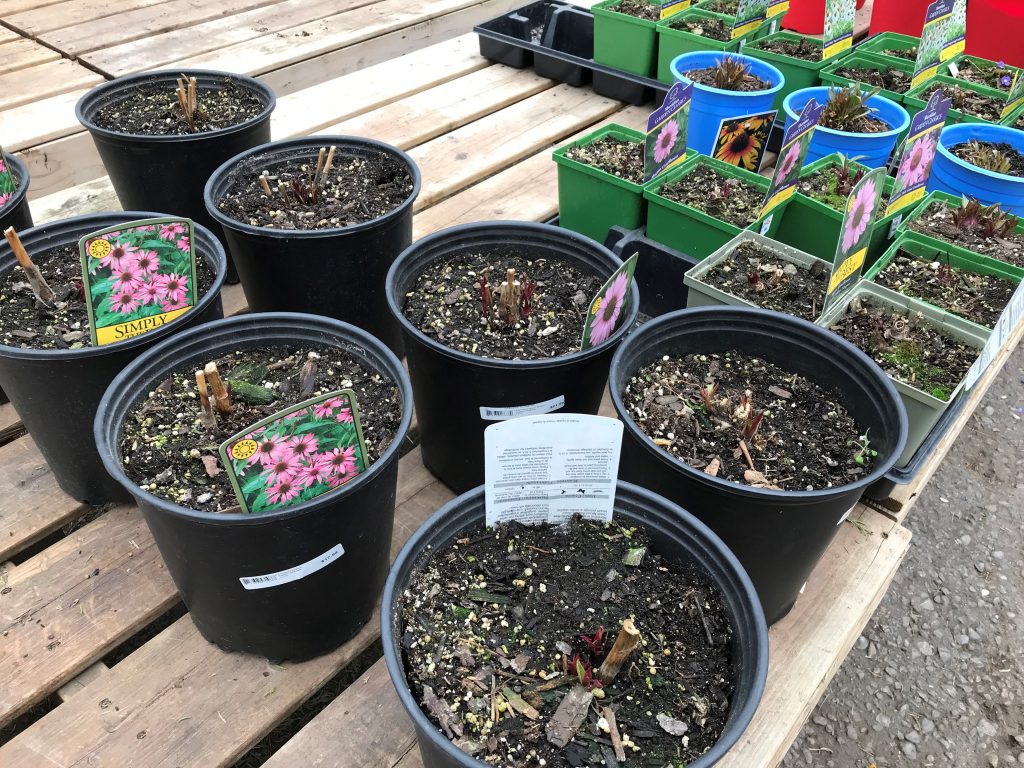

Dormant Perennials
t is early April and if you are like most Canadians, you are waiting for the long weekend of May to do your planting. And that would be a shame. Fact is, one of the best times of the year to plant is right now.
Yes, there will be frost. The ground is still cold and damp from winter. You say, “The Leafs are still playing hockey, so how can this be a good time of year to plant?” The truth is all these reasons for putting off planting are good reasons why you should be planting this weekend.
Most trees, flowering shrubs, roses, and perennials will thrive when planted in early spring (just not frost tender annuals). A dormant plant that normally survives our winter is not only capable of growing while the soil is cool, but they also prefer this to the heat and relative dryness of late May and June.
The caveat is that the plants you locate in your garden or containers now are dormant, i.e., sleeping. If they have been forced in a greenhouse, as many nursery plants are this time of year, the new growth is soft and susceptible to frost damage. Make sure that your new plants are not showing leafy green or blooms.
As the soil warms and days lengthen, a newly planted tree, for example, will put down new roots and produce growth in its own time. Nature will take its course and you can put your feet up come late May when the garden retailers are frantic with customer traffic and your neighbours come over to borrow your rototiller and a shovel.
Which is another reason why this is an ideal time of year to plant: supply and demand. We have heard plenty about supply chain problems. Well, the demand for plants in the last couple of years has skyrocketed also. The result is a general shortage of quality plant material. The early bird not only gets the worm, but also gets the fattest, juiciest worm. The best quality plants are the first out the door.
The hardy plants that you purchase now have either been grown domestically in a field, plastic covered hoop house or a greenhouse, or they have been imported from the warmer climes.
We always look for the domestically grown nursery stock first. If a plant has been “locally sourced” it is more likely to thrive in your “local” garden and climate. If the seed source of the tree, shrub, or evergreen that you acquire is local, so much the better. Locally seed sourced plants have plant hardiness built-in genetically. Usually, the tag on the plant will indicate that it is grown in Ontario. If not, it likely is grown elsewhere. You can always ask a service professional where you shop for plants. Chances are they helped to unload the truck that delivered the plants in the first place. If it had license plates from Tennessee, or Washington State there is your answer (by the way, most of the magnolias sold in Ontario grew in Tennessee).
Sometimes we do not have a choice of our desired plants origins. Many of the Japanese maples and Emerald cedars sold here originate in British Columbia or Washington State. The same may be true for many fruit trees. Again, there is value in simply asking the question.
Or go online and buy directly from the grower. Last year, Mark bought 18 fruit trees from Silver Creek Nursery in Wellesley Ontario ( HYPERLINK “https://silvercreeknursery.ca/” https://silvercreeknursery.ca/). All their plants are grown on their farm: problem solved. They sell raspberries and other fruit bearing shrubs also.
Wherever you decide to do business, consider the many benefits of getting out there soon to plant. Come May 24, plan on some relaxation time.

